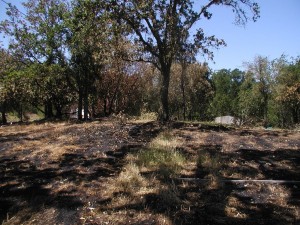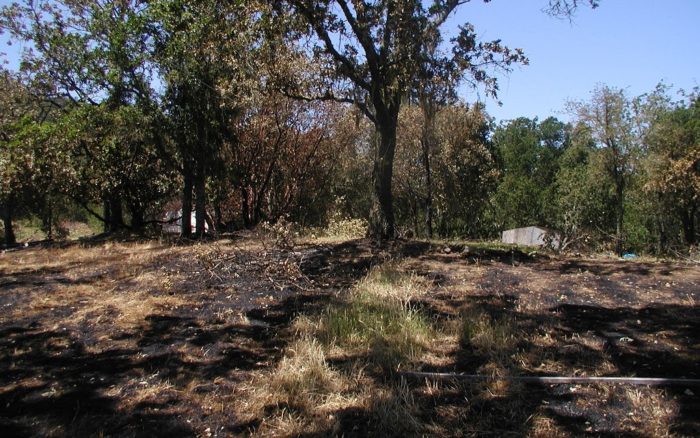 |
| Fire is an important part of many healthy ecosystems. Suppressed, it often becomes an uninvited guest! |
Prairie Fires and Forest Fire: Flames for New Consciousness?
The settlers coming into Illinois during the early part of the 19th century suffered many of the hardships of any people populating an unfamiliar territory. Drawn by location and the fertility of the soil, they did not realize the importance of diversity of plants and animals. Instead of acquiring an attitude of receptivity and willingness to learn about the unfamiliar ecosystems and the very different culture/consciousness that was maintaining them, early settlers tried to recreate that from “home.” They brought domestic animals and non native plants, many of which became invasive. Within 150 years, 99% of the native prairie no longer existed. This included the once abundant prairie chickens and water fowl, wolves, rattlesnakes, antelopes, and of course, the native peoples (First People) who had lived there for millennia. Unfortunately, this is the story for most of North America.
One of the devastating events for which non natives were not prepared was prairie fire. On one occasion in Old Stonington (see earlier posts) there was a loss of several lives as a group passing through on their way west camped “in a tangle of prairie grass.” Not knowing how to fight prairie fires, almost all of the group died (History of Christian County).
And yet, fire has been an important part of maintaining the health of many ecosystems, and never more so than in our forests in California. Suppressed, it often has the last say. Early peoples knew this, making sure that fire moved through an area with varied frequency and intensity (pyrodiversity), clearing underbrush and young saplings that could become invasive, as well as pathogens that would sicken a forest or a grassland. Fuel load did not reach dangerous levels.
In a recent trip to north central Oregon my husband and I experienced the sad consequences of stopping fire. Large areas of land are designated National Grasslands. First People maintained the grasslands by burning. This prevented native juniper saplings from becoming invasive. When white man arrived, this burning stopped, and juniper has become invasive. Oregon has turned this into a win/win situation, logging these young trees to sell as lumber for fence posts and pole structures, juniper being ideal as it resists rot. This not only provides jobs but also restores the grasslands.
But it is not just the practices of the First People which maintained diversity and balance, but their consciousness as well. As Charlie Toledo, Executive Director of the Suscol Intertribal Counsel in Napa County, California, stated, “When white man arrived, this was not a wilderness paradise but a cultivated agricultural preserve so vastly different from anything they [Europeans] had ever experienced before, their eyes [my emphasis] could not see it.”
Perhaps only now that we have lost so much in our environment, and are at risk of losing so much more, can we realize the importance of the seeing presence (consciousness) that maintains healthy balance. This consciousness is not primitive, as white man believes/d, but different from the more intellectually based consciousness of the western European mind since the 1600’s. My experience is that this consciousness can be learned, or re-learned, and really must be, if we are to survive.
One system that serves this is Biodynamic agriculture. My own story of the healing of our ranch (Farming Soul: A Tale of Initiation) is also the story of healing the psyche through the development of spiritual tools and their application to farming. Our task in this age is to incorporate this way of perceiving along with intellect. In holding these differing ways of apprehending, a “new” consciousness results, very much like Jung’s third, or transcendent function. This consciousness acknowledges our interconnection with all in this web of life.
Since the earliest of times, fire has been an important, if harsh, teacher. Our relationship to fire has been associated with consciousness—or lack thereof. In The Red Book (2009, 64), Carl Jung painted a picture of the Indian creator of the world, Prajapati, bowing low before the enormous flame of the Hindu fire god Agni, whom he is has just conjured. He saves himself only through sacrifice.
Perhaps the flame of this “new” consciousness can promote health and well being, but only if we humble ourselves through sacrifice of human hubris. Otherwise, it may well burn everything in its path.
